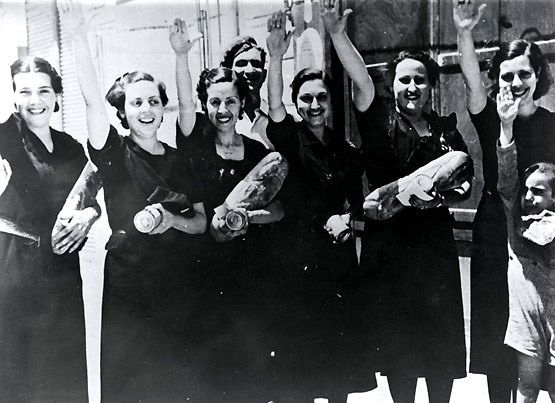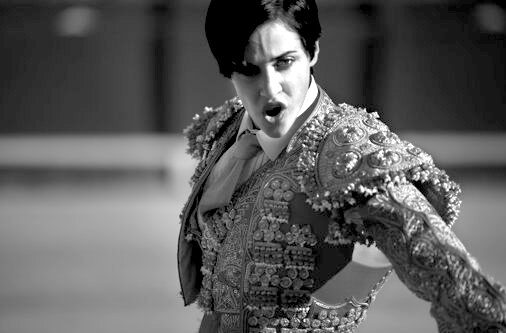The advent of fascism in Spain during the second half of the 30s became an emblem of a historical lockdown, a kind of revival of the deadly battles between Catholics and Protestants during the Thirty Years War (1618-1648). This week, we sought to understand the advent of fascism as the result of a series of intense, deeply conflicted internal battles that characterized the Second Republic and its last stage, the Civil War (1936-1939). This advent became also an emblem of a historical lockdown that would last 40 years. Despite the violence, loss, and death, music and religiosity played a role in this moment of reconfiguration of historical memory, as sources of life and also death, and as mediators of the conflicted and contradictory citizenship and nationhood Spain had become.

On Tuesday we discussed the basics of the “Spanish Civil War,” and the role that these three years played in the unfolding of fascism and historical memory; we saw how Anarchy, Marxism / Communism, Republicanism, and Nationalism all weighed in the production of films in this decade, and more particularly through the Civil War period. We watched in class a clip of Benito Perojo’s Suspiros de España / Whispers of-from Spain (1938), and in our reading we focused on the strategic negotiation of the visual aspect (camera angles and shots, costuming, composition, the dimension of verisimilitude granted by documentary footage composed with historical images of written registers, formation of mobs, poverty, and the role of song as a voice-over. We contrasted Perojo’s hopeful, highly aestheticized view of these Civil War events with Estrellita Castro as great buffer to alleviate loss and death, with Director Basilio Martín Patino’s Canciones para después de una guerra / Songs for the Time After A War (1976). Patino died in mid-August of 2017, and his great film produced merely a year after the death of the dictator replayed the times of the Civil War with clinical precision, to present a clearer shot than Perojo’s.
In your post this week, consider the four areas that Pavlovic names for film production in the late 30s (Anarchy, Marxism / Communism, Republicanism, and Nationalism ), and compare-contrast Perojo’s Whispers with Patino’s Songs. NOTE: I am not asking you to summarize our reading from Thursday’s class, but to find your own reading of these songs and whispers, to build an argument about war and music in the time of advent of fascism in Spain.
Try to post your reflection by Sunday afternoon. Hope to see some of you Sunday at 4.

This week, in our analysis of the time period of the Second Republic and the emergence of new film styles or categories in Spain, including (Anarchy, Marxism / Communism, Republicanism, and Nationalism), we began to understand how different music styles, specifically folkloric music, helped to bond Spaniards all over the country. We discussed the expulsion of both the Jews and the Muslims at a time when those in power were making attempts at creating a more homogenized country in terms of race/ethnicity and culture, and with these exiting groups of people, also left different styles of music until their return years later; it was the ‘Cristiano Viejo’ that the Nationalists were trying so hard to have pervade throughout the country at this time.
With the afore mentioned four areas of film production in the late 30s, came an expansion of connections between Spaniard filmmakers and those in other countries who had the economic means of providing the necessary tools and funding to increase Spanish film production. The Nationalists, for example, looked to Germany, (an Axis power) that had similar goals of expulsing “unwanted citizens” at the time, for equipment that would fund propaganda or news reel type films. The two songs we focused on in this unit included those by Perojo and Patino, which differed a lot from the type of score/soundtrack we had been experiencing in films thus far in this class. We spoke about ‘schismogensis,’ or the break stemming from tension between opposing sides, in this case the different political regimes, and how this influenced music. It appears that during this time, although Spain was very split politically and economically, music was one thing that had the ability to join people with differing viewpoints and of different statuses. In looking at Perojo’s song a little more deeply, we discussed the visual tension or conflict between the woman’s gaze and where her arm is pulling her (downwards); this signified the conflict between groups of people, but all of the different groups are also symbolized in the many people laying and listening contently to the woman sing.
Dear Amaia,
I am delighted to read in your comment that you have captured the multiplicity of positions together and apart that ran with and against each other in the period of the Second Republic. I encourage you to think further on tensions such as these: “if the Nationalists wanted to create homogeneity, why did they leave Spain and seek funding in Germany, a country who was very much not ‘Cristianos viejos?” Or “what are the aesthetic qualities of music that allowed Spaniards at the time to come together even when having opposed political positions?”
The two songs that we listened to for this unit in class are both beautifully composed and sung, but offer different insights and attitudes towards the condition of Spain during the Spanish civil war. The first clip, from Suspiros de España (1938), plays the song with the same name as sung by Estrellita Castro. The song laments a departure from Spain and a wish to return to the country so loved by the singer. Castro sings of the person she is because of her home country and everything that it has offered to her. The song in Canciones para después de una guerra (1971), “La Bien Pagá,” speaks of a different narrative about moving on from one lover to the next. The title, “The Well-paid” indicates the sacrifices that the singer has given to the old lover and the fact that he is done with her. In the context of the film, the song seems to be pointing to the old-lover being Spain itself and in turn shows everything that she has taken from her people. Both pieces speak to moving on from Spain, but the former takes on a tone of despair, while the latter speaks to the anger or dislike that the singer feels for the country.
The themes of these songs seem to match the sentiments of the directors at the time and the messages they wished to portray to their audiences. Perojo’s film, Suspiros de España (1938), is a well-known Nationalist film and glorified Spain above all else. The characters and songs that are present in this film obviously follow suit. Patino, in Canciones para después de una guerra (1971) has a more Republican sentiment and is harshly criticizing the actions of the Spain after the end of the Spanish Civil War.
Although I missed class this week and therefore lack some context to these films, I have a few takeaways. The theme of this week, especially rituals of life and death, is especially interesting considering the movements against religious minorities, since religion plays such a large role in perceptions and realities of life and death. Conflict between parties and within factions creates a spectrum of narratives about this era, and the screenings show these various perspectives. It seems as though discussion focused on the role of music and folk culture, both of which have strong narrative affordances. Pavlovic however warns that Suspiros in particular feeds into a stereotyping or exoticism of folk culture, and with each political group having their own cinematic productions, I can imagine how Spain is caricatured for political purposes through film.
I would like to talk more about these issues and I look forward to class this week.
In our discussion of Anarchy, Marxism/Communism, Republicanism, and Nationalism, we defined each and discussed their role in film. Each of these types of films preceding the Civil War focused on some agenda to win over the public. Anarchy focused on changing things radically. Their films focused on utopias and questioned government while in their later period they focused more on comedy. The Marxist/Communist community produced films with the goal of unifying the public. Republicanism focused on camaraderie, and nationalism centered on economic interests. I believe that songs of the folkloric genre supported both the republican and marxist/communist agendas.
In Suspiros de España (1938), we hear a woman singing about her connection to her home, Spain. This song holds strong weight with the public as the woman is beautifully singing about her love for her country and roots. This glorified view of Spain allowed audiences to relate to her in their love for their families and cities as well as admire her for her beauty and talent. The civil war was continuing on at this time and this song served as a unifying factor for Spain.
Songs like these in Perojo’s film, especially those of the folkloric genre, greatly influenced the Spanish public. Despite their uprising during a civil war, which can be viewed as a great divide within Spain at the time, they bought populations together. These folkloric songs made people feel at home and reminded them of the comfort of their nation. In this sense, the folkloric style might have been utilized by the Communist-Marxist section of Spain based on their role in joining people together. The Communist-Marxist section of Spain used propaganda and pragmatic values to unify the country. These songs did exactly that and temporarily ended separations among friends and family. Additionally, they support the fraternal and camaraderic goals of republicanism in their unification.
This relation to political sectors was not necessarily intentional, however the music these movies use have an effect on the Spanish people and they lean into politics wether they meant to or not.